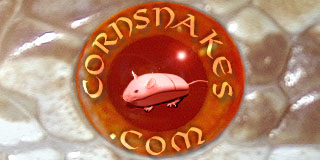EtR_Bliss
Hatchling
Okay... I have purchased a book at the pet store and I have a question about what I read. I am going to quote the whole 2 paragraphs from the book. What I am asking of you guys is to tell me what you guys think. If this could be possibly true or not, and any experiences you've had, any opinions, etc...
Title of book: Corn & Rat Snakes
Author: Philip Purser
Page: 77 (at top)
(ISBN 0-7938-2880-5)
"Over the past two decades, I've noticed a definite trend in the temperature at which my corn snake eggs incubate, and the temper of the emerging offspring. If incubated at temperatures toward the low end of the acceptable spectrum (79*F to 86*F [26.1* - 30*C] is the spectrum), the young tend to be more mild mannered, calmer, more likely to feed without problems, and easier to handle. This "benevolent range" of temperature is 79* to 82*F (26.1* - 27.8*C)
When eggs are incubated at the high end of the acceptable range, the emerging young are prone to bite, reluctant to feed, ill mannered, and are more difficult to handle as they mature into adulthood. These individuals were incubated at 83* to 86*F (27.8* - 30*C) and hatched two to three weeks earlier than their counterparts. At adulthood, these corn snakes also tend to have similar egg clutches, and they do not attain the same body weights as those individuals that incubated at lower temperatures."
I would appreciate any opinions on this
Thanks
Title of book: Corn & Rat Snakes
Author: Philip Purser
Page: 77 (at top)
(ISBN 0-7938-2880-5)
"Over the past two decades, I've noticed a definite trend in the temperature at which my corn snake eggs incubate, and the temper of the emerging offspring. If incubated at temperatures toward the low end of the acceptable spectrum (79*F to 86*F [26.1* - 30*C] is the spectrum), the young tend to be more mild mannered, calmer, more likely to feed without problems, and easier to handle. This "benevolent range" of temperature is 79* to 82*F (26.1* - 27.8*C)
When eggs are incubated at the high end of the acceptable range, the emerging young are prone to bite, reluctant to feed, ill mannered, and are more difficult to handle as they mature into adulthood. These individuals were incubated at 83* to 86*F (27.8* - 30*C) and hatched two to three weeks earlier than their counterparts. At adulthood, these corn snakes also tend to have similar egg clutches, and they do not attain the same body weights as those individuals that incubated at lower temperatures."
I would appreciate any opinions on this
Thanks
